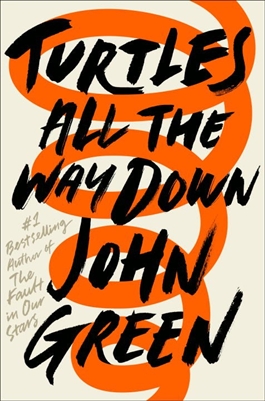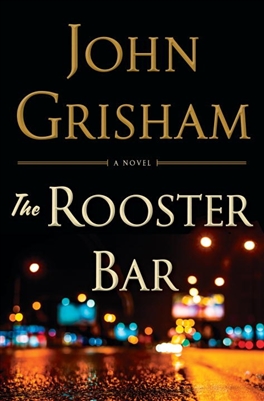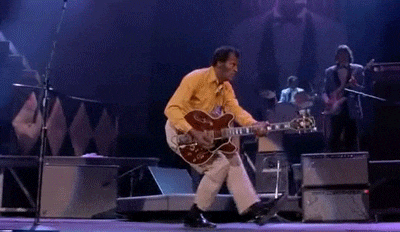by Andrew Hedglin
“John” is one of the most common names in the English language.
Therefore, it comes as no surprise that some of book publishing’s hottest commodities share the same cognomen. Two of the books I’m about to talk about were written by a John and published in October, and the other one a John is responsible for and, while not quite new, would make a great gift this holiday season.
John Green, in addition to appearing to YouTube on the Vlogbrothers and Crash Course channels, is responsible for some of this generations most memorable YA titles, such as Looking for Alaska, Paper Towns, and the ubiquitous The Fault in Our Stars. The latter two were made into movies, so you’ve probably heard of his works even if his name isn’t familiar. After a five-year publishing hiatus, Green returns with his new novel, Turtles All the Way Down.
 Turtles All the Way Down tells the story of Aza Holmes as she hangs out with her over-the-top friend Daisy, is awkwardly romanced bt her childhood friend Davis Pickett, and searches for clues as to what happened to the missing, tuatara-obssessed, shady local billionaire Russell Pickett (who also happens to be Davis’s father). Meanwhile, Aza struggles to live her daily life while continuously caught in her “thought spirals,” which is her shorthand for explaining the will-destroying nightmare that living with obsessive-compulsive disorder can be.
Turtles All the Way Down tells the story of Aza Holmes as she hangs out with her over-the-top friend Daisy, is awkwardly romanced bt her childhood friend Davis Pickett, and searches for clues as to what happened to the missing, tuatara-obssessed, shady local billionaire Russell Pickett (who also happens to be Davis’s father). Meanwhile, Aza struggles to live her daily life while continuously caught in her “thought spirals,” which is her shorthand for explaining the will-destroying nightmare that living with obsessive-compulsive disorder can be.
While Turtles has a touch of romance (and only a fraction of the turtles promised by the titles), it is far less melodramatic than the teenage cancer star-crossed romance that The Fault in Our Stars was perceived by some to be. Aza and her illness are thoughtfully represented by Green, who suffers from OCD himself. Although your mileage may vary, I also highly enjoyed the madcap levity that best friend Daisy provides. It’s an evolution in his writing, but still definitely a John Green work that both long-time fans and hopefully some new readers will really appreciate.
 Speaking of madcap hi-jinks, John Grisham released his second mystery novel for adults this year (Camino Island, an intensely readable Fitzgerald manuscript heist, came out in June). This book, The Rooster Bar (which has even fewer roosters than the previous book had turtles) tells the story of three low-rent law students moving from scam-to-scam in the wake of a tragic suicide of a friend and in the shadow of impending student loan debt and professional misery. Friends Mark, Todd, and Zola stop studying for the bar exam, attempting to practice law out of an actual bar on the far side of Washington D.C. from the substandard, for-profit law school they just dropped out of so they can attempt to hustle legal fees in traffic court and hospital cafeterias. They also use information left behind from their lost friend to (hopefully) nail the guy at the top of the disgusting-but-not-actionable law school scheme.
Speaking of madcap hi-jinks, John Grisham released his second mystery novel for adults this year (Camino Island, an intensely readable Fitzgerald manuscript heist, came out in June). This book, The Rooster Bar (which has even fewer roosters than the previous book had turtles) tells the story of three low-rent law students moving from scam-to-scam in the wake of a tragic suicide of a friend and in the shadow of impending student loan debt and professional misery. Friends Mark, Todd, and Zola stop studying for the bar exam, attempting to practice law out of an actual bar on the far side of Washington D.C. from the substandard, for-profit law school they just dropped out of so they can attempt to hustle legal fees in traffic court and hospital cafeterias. They also use information left behind from their lost friend to (hopefully) nail the guy at the top of the disgusting-but-not-actionable law school scheme.
The Rooster Bar has one of those grand conspiracies that has become a Grisham hallmark, but those who seek to uncover it are not out for justice; they’re out for themselves. They not only skirt the rule of law; they barely seem to understand its intricacies. But, hey, when you enroll at a law school called Foggy Bottom, you deserve what you get. Plenty of rich atmospherics highlight a book that combines the the scheming of The Brethren with the delicious sleaziness of Rogue Lawyer. Both the plot and the main characters end up in a place you’d least suspect.
As for the final book I’d like to talk about, I can only repeat a familiar refrain: let’s talk Jackson. Ken Murphy’s luscious photography dominates the book, but I can assure you that it would not exist without the will and insistence of Lemuria owner John Evans.
 I’ve lived in the Jackson area all my life, and I love this city. I’ve spent a lot of time in Belhaven, Fondren, Downtown, the Interstate corridor, and parts all over. I find something new to love all the time, or I rediscover a spot once visited that tugs me back into the past. Although the Jackson this book captures is frozen in the specific period of 2013-14 (here’s a neat trick: compare the Lemuria cover to the view from a half-flight up Banner Hall’s staircase and see what noticeable feature is flipped), there’s a timeless quality to the sense of place the photographs capture. Murphy’s beautiful, mostly depopulated photos allow us to imagine ourselves among the beautiful scenes of the city we share, in both memory and possibility. If you haven’t already checked out one of Jackson books, a Lemuria exclusive, I highly encourage you to do so.
I’ve lived in the Jackson area all my life, and I love this city. I’ve spent a lot of time in Belhaven, Fondren, Downtown, the Interstate corridor, and parts all over. I find something new to love all the time, or I rediscover a spot once visited that tugs me back into the past. Although the Jackson this book captures is frozen in the specific period of 2013-14 (here’s a neat trick: compare the Lemuria cover to the view from a half-flight up Banner Hall’s staircase and see what noticeable feature is flipped), there’s a timeless quality to the sense of place the photographs capture. Murphy’s beautiful, mostly depopulated photos allow us to imagine ourselves among the beautiful scenes of the city we share, in both memory and possibility. If you haven’t already checked out one of Jackson books, a Lemuria exclusive, I highly encourage you to do so.



Comments are closed.